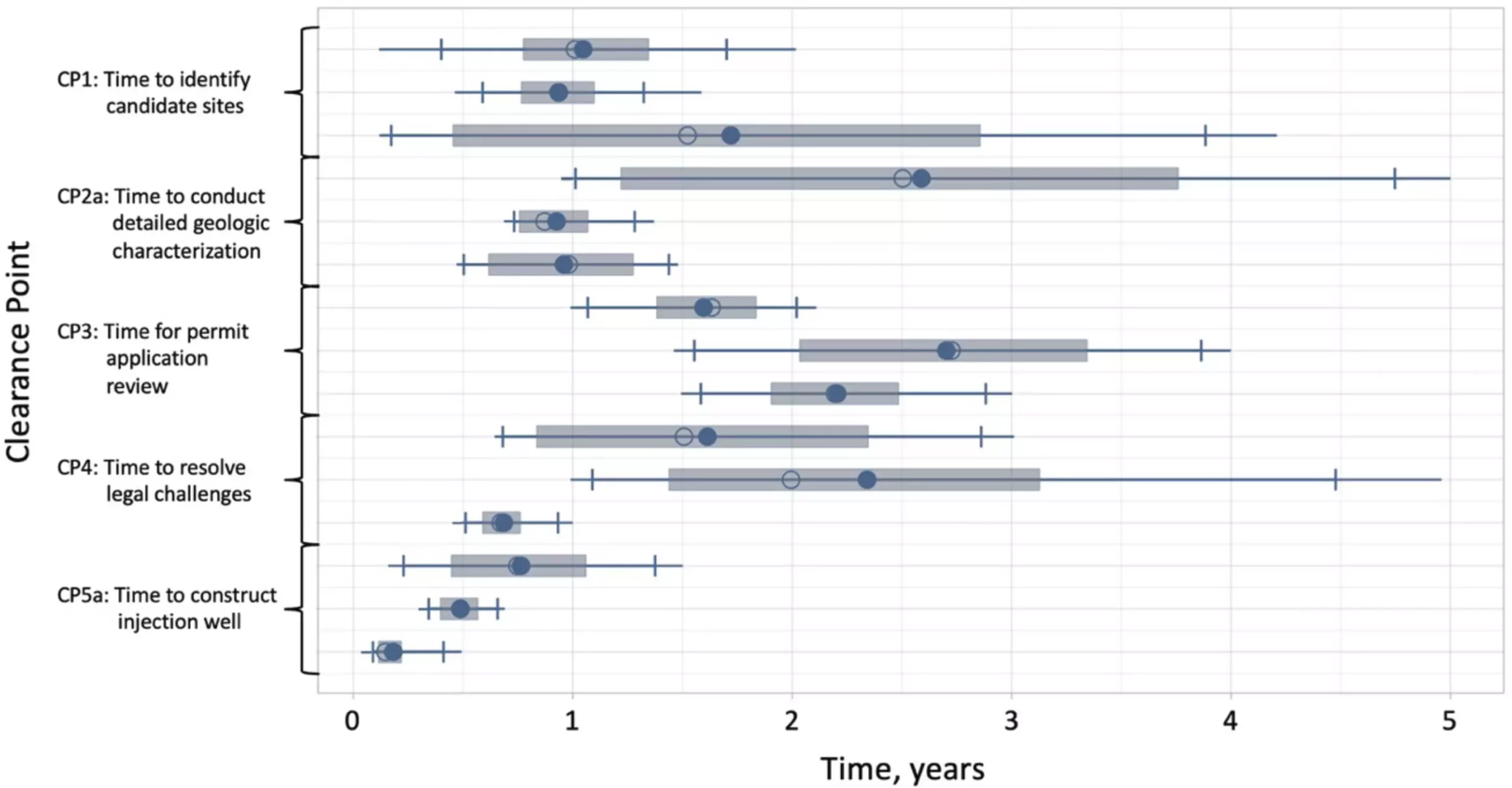Carbon capture and sequestration (CCS) is a process aimed at reducing atmospheric carbon dioxide levels in order to combat climate change. While CCS is a crucial tool for decarbonizing the U.S. economy, there are numerous barriers that hinder the development, approval, and implementation of geologic sequestration sites. These barriers include the need for appropriate geologic formations and approved injection facilities.
Recently, the Carnegie Mellon University Department of Engineering and Public Policy conducted a study to estimate the time required to establish a geologic sequestration site in the U.S. The study identified six clearance points that must be passed for a site to become operational, offering insights into how this timeframe could be reduced. These clearance points include finding suitable sites, site preparation, EPA approval, resolving legal challenges, constructing wells and pipelines, and obtaining injection authorization.
To estimate the timeframes for each clearance point, Ph.D. student Emily Moore and faculty members Valerie Karplus and Granger Morgan sought input from experts in the field. By combining expert judgments in a simulation framework, they projected the timeframes within which these clearance points could be passed. The findings of their study, published in the Proceedings of the National Academy of Sciences, indicate that on average, it takes between 5.5 and 9.6 years for a site to become operational. The upper bound estimate is 12 years, while the lower bound is 2.7 years, even considering the most optimistic expert judgments.
These estimates highlight the need for strategies to expedite the process of establishing geologic sequestration sites and their meaningful impact on the nation’s 2050 climate goals. It is particularly critical to accelerate the process if projects are to be eligible for the Section 45Q CCS tax credit, which expires in 2032, much earlier than the upper bound estimate. In response, the authors of the study propose seven recommendations to speed up the utilization of sites.
The recommendations put forth by the authors primarily address the clearance points that were estimated to cause the longest non-technical delays. These include acquiring pore space, the Class VI permit application review process, and potential litigation. The authors suggest granting states primacy, such as what is currently in place in North Dakota and Wyoming, to expedite the application process. Legislative efforts could also be made to facilitate the permitting process. Developing legal frameworks to reduce litigation and engaging communities where sites are being developed could also mitigate protracted delays.
The study recognizes the importance of public acceptance for the successful deployment of emerging technologies like CCS. Engaging the public and treating landowners as stakeholders are crucial steps towards mitigating the risks associated with court challenges and potential delays. By involving communities in decision-making processes and addressing their concerns, the implementation of geologic sequestration sites could be streamlined.
Over a decade ago, Granger Morgan and his colleagues at Carnegie Mellon led a team that developed a comprehensive approach to address key issues related to decarbonizing the nation’s energy system. This approach considered deep subsurface ownership, learning from experience, and long-term stewardship and liability. The recommendations and resulting book from this project were widely distributed to key decision-makers, including members of Congress. However, the urgency of decarbonization was not prioritized at the time, leading to a piecemeal system that only partially addresses the problem on a state-by-state basis.
The critical analysis of CCS and the establishment of geologic sequestration sites reveals the various challenges and barriers that currently exist. While the study provides important insights into the timeframes required for these sites to become operational, it also highlights the need for expedited processes and public engagement to achieve meaningful impact. By addressing the obstacles and implementing the proposed recommendations, the U.S. can take significant steps towards decarbonizing its economy and meeting its climate goals.


Leave a Reply